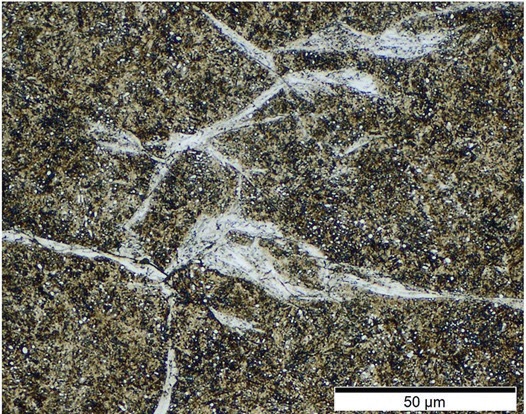What makes a BRO?
Drs. Wilfred T. Tysoe & Nicholas D. Spencer | TLT Cutting Edge April 2019
New evidence points the finger at ZnDTP alone as a primary suspect in the formation of white etching cracks.
Rolling-element bearings have a certain anticipated service lifetime that is determined by rolling contact fatigue. Under fluctuating contact conditions, however, premature macropitting can lead to failure before this estimated lifetime is reached. Often this involves the formation of carbon-saturated nanostructures at the crack faces.
Upon etching, these structures appear white, leading to the designation of the failures as white etching cracks (WECs). Although WEC formation has been reported in many applications, including transmissions, compressors and alternators, it is their ubiquitous appearance in wind-turbine gearbox bearings that has led to a recent upsurge in both the significance and amount of research activity in this area.
From the wealth of experimental data on WEC formation, it has emerged that certain lubricant compositions are more likely to lead to WEC than others. A series of “bad-reference oils” (BROs) has been identified, and a prevalent theory has postulated that the combination of zinc dialkyldithiophosphate (ZnDTP) and over-based calcium sulfonate in these BROs is responsible for WEC formation under the right sliding and load combination. The mechanism has been suggested to comprise the generation of “ionic hydrogen” within the lubricant, which combines with electrons at nascent steel surfaces, resulting in hydrogen formation and transport along grain boundaries, ultimately leading to hydrogen embrittlement and cracking.
Recent work (
1) reported in Tribology Letters by Benjamin Gould, Nicholaos Demas and Aaron Greco from Argonne National Laboratory, with industrial collaborators Grant Pollard and Jakub Jelita Rydel (Afton Chemical) and Marc Ingram (Ingram Tribology), has addressed the issue of which lubricant components accelerate the WEC phenomenon. The authors examined the performance of a series of model transmission lubricants containing combinations of ZnDTP, branched and linear calcium sulfonates, sodium sulfonate, polysulfide and glycerol monooleate in a Group III base oil with a polyisobutylene viscosity index improver and a polymeric ester pour point depressant. The amount of solubilized water (previously hypothesized to play a role in WEC formation) was determined for each lubricant by Karl Fischer titration.
Tribological tests were carried out in a micropitting rig (with both rolling and sliding and line and elliptical contacts) to determine time to failure through macropit formation, after which sectioning, polishing and etching were performed to look for WEC formation, an example of which is shown in Figure 1. In parallel, friction and optical tribofilm thickness measurements were made in a mini-traction machine.
 Figure 1. A white etching crack network formed by a benchtop test. (Figure courtesy of Springer-Nature, Ref. 1.)
Figure 1. A white etching crack network formed by a benchtop test. (Figure courtesy of Springer-Nature, Ref. 1.)
The results were both surprising and conclusive. Although WEC formation was observed for all lubricant compositions except that containing only calcium sulfonate as an additive, the most efficient producer of WEC in the shortest number of cycles was the lubricant containing ZnDTP alone. This refuted the commonly accepted view that calcium sulfonate also was necessary to induce WEC.
The ZnDTP-only lubricant also contained the lowest amount of solubilized water, suggesting that this is not a primary cause of WEC formation. Interestingly, the ZnDTP-only lubricant took the longest time to form a tribofilm, which also was the roughest of all the films observed, and required the longest time to reach a steady-state friction coefficient, which had the highest value (0.95) of all the combinations tested. The authors hypothesize that the high friction is key here, leading to a higher sub-surface stress state and high frictional energy input into the system. This had previously been suggested to play an important role in WEC formation.
This careful study has significantly advanced our understanding of the WEC phenomenon, showing that within the BROs studied, the bad actor appears to be ZnDTP. This provides an excellent starting point for further investigations into the molecular-scale mechanism of the process and ultimately a solution to the failure of wind turbines.
FOR FURTHER READING
1.
Gould, B., Demas, N.G., Pollard, G., Rydel, J.J., Ingram, M. and Greco, A.C. (2019), “The Effect of Lubricant Composition on White Etching Crack Failures,”
Tribology Letters,
67: 7.
Eddy Tysoe is a distinguished professor of physical chemistry at the University of Wisconsin-Milwaukee. You can reach him at wtt@uwm.edu.
Nic Spencer is professor of surface science and technology at the ETH Zurich, Switzerland, and editor-in-chief of STLE-affiliated Tribology Letters journal. You can reach him at nspencer@ethz.ch.